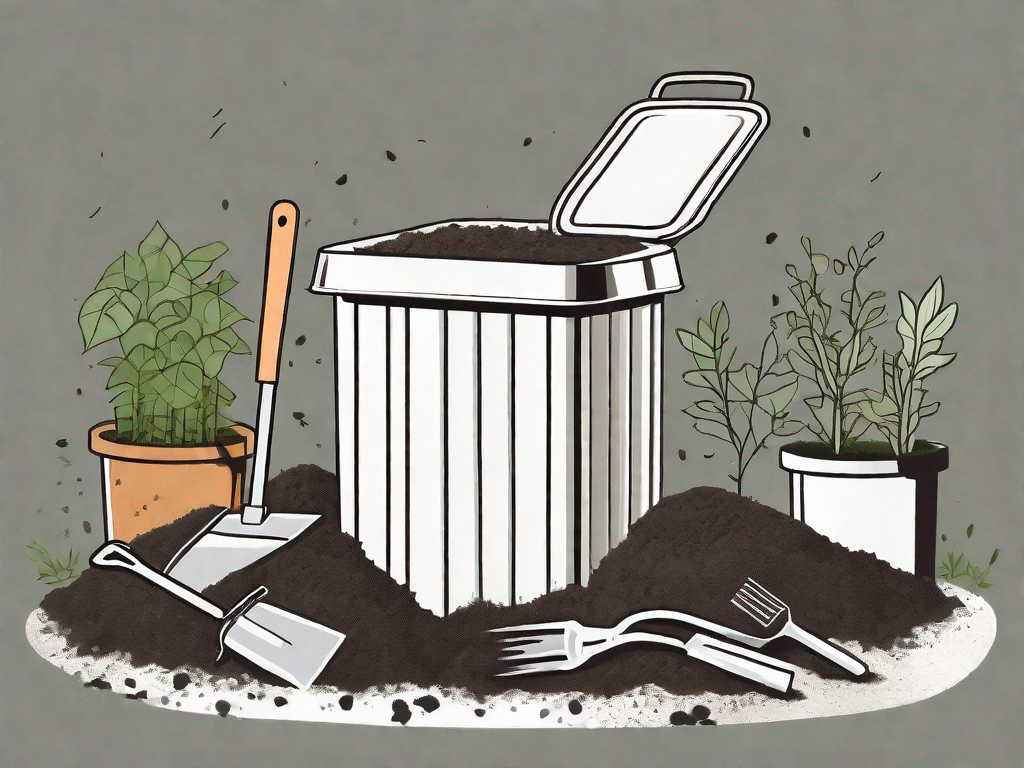Using Perlite for Compost Bin Base Projects
Published on: May 10, 2024
Get an estimate for your project in 60 seconds

Perlite, a naturally occurring volcanic glass, is a popular choice for various gardening and construction projects. Its unique properties make it an excellent option for a compost bin base. In this comprehensive guide, we will explore why perlite is a suitable material for such projects and how you can use it effectively.
Understanding Perlite
Perlite is a form of amorphous volcanic glass, although it’s much more than your typical glass. When heated to a suitable temperature, perlite expands from four to twenty times its original volume, resulting in an incredibly lightweight material that is porous, making it ideal for aeration and drainage purposes.
Perlite is commonly used in horticulture due to its ability to retain water and oxygen, promoting healthier plant growth. It’s also used in construction and industrial applications because of its excellent insulating properties and light weight.
Why Choose Perlite for Your Compost Bin Base
Perlite is an excellent choice for a compost bin base due to its unique properties. Its porous nature allows for excellent aeration, which is essential for the composting process. The air pockets in perlite help to speed up the decomposition of organic material, resulting in nutrient-rich compost.
Furthermore, perlite’s ability to retain water can help maintain the necessary moisture levels in your compost pile. It can absorb water and slowly release it back into the compost, preventing it from drying out too quickly.
How to Use Perlite for Your Compost Bin Base
Using perlite as a base for your compost bin is a straightforward process. Here, we provide a step-by-step guide to help you get started.
- First, you will need to source your perlite. Companies like Hello Gravel offer a variety of perlite products suitable for your compost bin base project.
- Next, prepare the area where you plan to set up your compost bin. The area should be flat and easily accessible.
- Spread a layer of perlite on the ground where your compost bin will sit. The layer should be about 2-3 inches thick.
- Place your compost bin on top of the perlite layer. The perlite will provide aeration from the bottom, helping to speed up the composting process.
It’s as simple as that. With perlite, you can create a compost bin base that promotes faster composting and healthier soil.
Getting Your Perlite from Hello Gravel
When it comes to sourcing perlite for your compost bin base project, Hello Gravel is a reliable choice. They offer high-quality perlite in various sizes, ensuring you find the perfect product for your needs.
Not only does Hello Gravel offer a wide range of perlite products, but they also provide a convenient online quote form to make your purchasing process as smooth as possible. With their commitment to customer satisfaction and quality products, you can be confident in your choice to use Hello Gravel for your perlite needs.
Conclusion
Perlite is a versatile material with a wide range of applications. Its unique properties make it an excellent choice for a compost bin base. By using perlite, you can promote faster composting and create nutrient-rich soil for your garden.
Whether you’re a seasoned gardener or just starting your composting journey, perlite can make the process easier and more efficient. So why wait? Start your compost bin base project today with perlite from Hello Gravel.
Get Your High-Quality Perlite Today!
Ready to enhance your composting efforts with top-notch perlite? Look no further than Hello Gravel, your nationwide provider of premium aggregates. Experience our white-glove service and let us streamline your project needs with just a few clicks. From small driveways to large civil construction projects, we deliver it all. Check out our products now and let us supply and deliver the highest quality materials directly to your doorstep. Your garden—and your peace of mind—will thank you.
Author: Erik Schultz